Best Rust Programming Books to Buy in December 2025

The Rust Programming Language, 2nd Edition


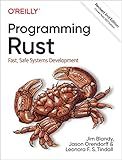
Programming Rust: Fast, Safe Systems Development


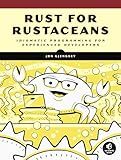
Rust for Rustaceans: Idiomatic Programming for Experienced Developers


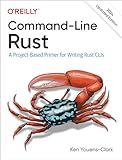
Command-Line Rust: A Project-Based Primer for Writing Rust CLIs



Rust Programming: A Practical Guide to Fast, Efficient, and Safe Code with Ownership, Concurrency, and Web Programming (Rheinwerk Computing)



Hands-on Rust: Effective Learning through 2D Game Development and Play


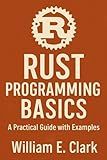
Rust Programming Basics: A Practical Guide with Examples


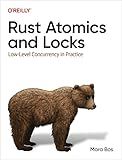
Rust Atomics and Locks: Low-Level Concurrency in Practice


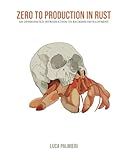
Zero To Production In Rust: An introduction to backend development


In Rust, a slice is a reference to a contiguous sequence of elements in a collection. Slices are often used to reference elements within arrays, vectors, or other sequences. They have a defined length and can only reference elements within the bounds of the original collection.
On the other hand, a reference in Rust is simply a way to borrow a value without taking ownership of it. References can point to any value or object in memory, not just elements within a collection. They are used to pass values by reference to functions or methods, allowing them to be accessed without copying the original value.
In summary, the main difference between a slice and a reference in Rust is that slices are specific to collections and have a defined length, while references can point to any value and are used for borrowing values without taking ownership.
What is the difference between a mutable slice and an immutable slice in Rust?
In Rust, a mutable slice allows the elements of the slice to be modified, while an immutable slice does not allow the elements to be modified after the slice is created.
With a mutable slice, you can change the values of the elements within the slice, whereas with an immutable slice, you can only read the values of the elements but not modify them.
In Rust, mutable slices are declared using &mut [T] notation, while immutable slices are declared using &[T] notation.
It is important to use immutable slices when you do not need to modify the elements within the slice to enforce safety and prevent unintentional changes to the data. On the other hand, mutable slices are used when you need to modify the elements within the slice.
What is the syntax for creating a slice in Rust?
In Rust, you can create a slice by using the following syntax:
let my_slice = &my_array[start_index..end_index];
Alternatively, you can also create a slice from a vector or another slice:
let my_vector = vec![1, 2, 3, 4, 5]; let my_slice = &my_vector[start_index..end_index];
let my_original_slice = &[1, 2, 3, 4, 5]; let my_new_slice = &my_original_slice[start_index..end_index];
In these examples, start_index is the index of the first element to include in the slice, and end_index is the index of the first element to exclude from the slice. The resulting slice will contain elements between start_index (inclusive) and end_index (exclusive).
What is the purpose of using slices in Rust?
Slices in Rust are used to provide a view into a contiguous sequence of elements stored elsewhere in memory, without actually owning the data. Slices are a flexible and efficient way to work with portions of data structures like arrays, vectors, and strings without needing to copy or move the entire data.
The primary purpose of using slices in Rust is to enable functions and methods to work with subsets of data without needing to allocate new memory or transfer ownership of the original data. This makes it easier to pass around references to data, and allows for more efficient and flexible code. Slices are commonly used in Rust when dealing with collections of data, such as iterating over elements, passing data to functions, or working with substrings.
What is the difference between a slice and a collection in Rust?
In Rust, a slice is a reference to a contiguous sequence of elements stored in memory. Slices are a view into a collection, allowing you to access a subset of the elements without taking ownership of them. Slices are represented by the type &[T] for immutable slices and &mut [T] for mutable slices.
On the other hand, a collection in Rust refers to data structures that store multiple elements of the same type in memory, such as arrays, vectors, hashmaps, and sets. Collections own and manage the memory allocated for their elements and provide various methods and operations to manipulate and access their data.
In summary, a slice is a view into a collection that allows you to access a subset of its elements without taking ownership, while a collection is a data structure that owns and manages multiple elements of the same type.
What is the advantage of using slices over arrays in Rust?
There are several advantages of using slices over arrays in Rust:
- Slices are more flexible: Slices can have a dynamic size, whereas arrays have a fixed size determined at compile time. This allows slices to represent a subset of an array without needing to copy or resize the original data structure.
- Slices are more ergonomic: Slices provide a more convenient way of working with collections of data, as they can be easily passed to functions and methods without needing to explicitly specify their size or type.
- Slices improve code reusability: Slices allow for code to be more reusable, as they can represent a portion of an array or another slice, making it easier to work with different parts of a data structure without modifying the original array.
- Slices are safer: Since slices contain a reference to the original data structure, they prevent common bugs such as reading or writing out-of-bounds memory, which can occur when working with arrays.
Overall, using slices in Rust provides a more flexible, ergonomic, and safe way of working with collections of data compared to arrays.
How to access individual elements of a slice in Rust?
To access individual elements of a slice in Rust, you can use square brackets [] with the index of the element you want to access. Here is an example:
fn main() { let my_slice = &[1, 2, 3, 4];
let first\_element = my\_slice\[0\];
let second\_element = my\_slice\[1\];
println!("First element: {}", first\_element);
println!("Second element: {}", second\_element);
}
In this example, my_slice[0] accesses the first element of the slice my_slice and my_slice[1] accesses the second element. Make sure to be cautious of out-of-bounds errors when accessing elements of a slice.
